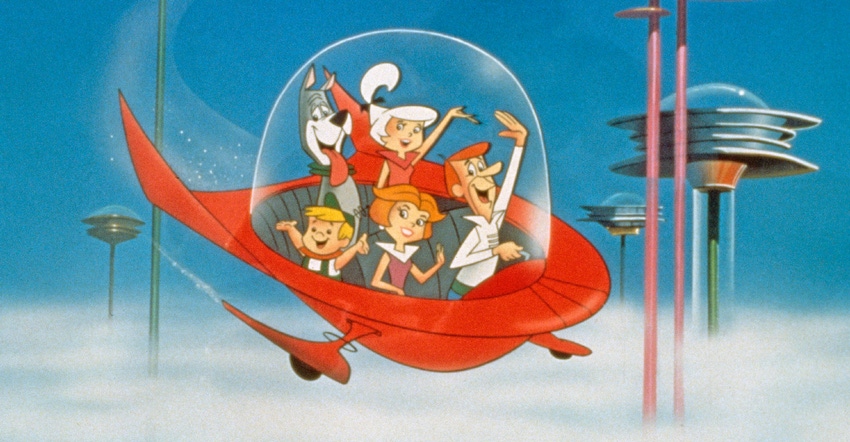
I’m old enough to remember the animated sitcom “The Jetsons,” as probably many of you are. While I wasn’t around when it first aired in 1962, I did catch many of the reruns. In the opening, the family buzzes through the sky in their green, clear-domed spacecraft, while the song plays, “Meet George Jetson, his boy Elroy, daughter Judy, Jane his wife.”
Remember it now?
The futuristic family cartoon was set 100 years in the future to 2062 in Orbit City. While we’re not commuting on freeways in the sky, many of the inventions or conveniences portrayed in "The Jetsons" have already become a reality — video calls, robotic vacuums, tablet computers, smart watches, drones, jet packs, flat-screen TVs, and even the PillCam.
As the cook in our house, I am particularly envious of The Jetsons’ Food-a-Rac-a-Cycle that could pretty much spit out everything from beef stew to boiled eggs and bacon with a push of a button.
Could this really be possible? Where is the food stored? How does it get prepared?
NASA’s need
The Jetsons’ Food-a-Rac-a-Cycle would be fantastic for astronauts in space, but we’re not quite there yet. When there’s a problem to solve or a barrier to overcome, challenge the masses. That’s exactly what NASA is doing with The Deep Space Food Challenge, which is an international NASA competition challenging teams to create novel and game-changing food technologies or systems.
Right now, astronauts aboard the space station get food from spacecraft regularly launching from Earth. But what about a trip to Mars? Future astronauts on a trip to Mars will spend years away from Earth, and they will need to bring everything they need with them. No cargo vessels will be able to deliver supplies.
The Deep Space Food Challenge, which launched Jan. 12 and runs through July 20, includes prize money of up to $500,000 for Phase 1. At each phase, different financial and nonfinancial incentives may be available to successful participants.
At every phase, solutions will be reviewed against the assessment criteria, and selected winners will be invited to move to the following phase.
The competition will identify food production technologies that can:
Help fill food gaps for a three-year round-trip space mission with no resupply.
Feed a crew of four astronauts.
Improve the accessibility of food on Earth, in particular, via production directly in urban centers and in remote and harsh environments.
Achieve the greatest amount of food output with minimal inputs and minimal waste.
Create a variety of palatable, nutritious and safe foods that require little processing time for crew members.
It is NASA’s hope the competition also will help us Earth dwellers. Food insecurity is a significant, chronic problem in urban, rural and harsh environments and communities. We’ve seen how disasters, and a pandemic, can disrupt supply chains and further aggravate food shortages.
Efficient use of volume, water and other inputs for producing food could enable technologies with reduced impact on the resources needed for food production here on Earth, especially in extreme environments and resource-scarce regions.
We’ve all seen what 3D-printing technology has to offer. It’s reported that Silicon Valley startup BeeHex has harnessed this technology to 3D-print pizza. The pictures look pretty tasty, but I can’t speak to the palate appeal.
Of all Orbit City’s technologies, Food-a-Rac-a-Cycle still feels pretty pie-in-the-sky. … We’ll see.
About the Author(s)
You May Also Like






